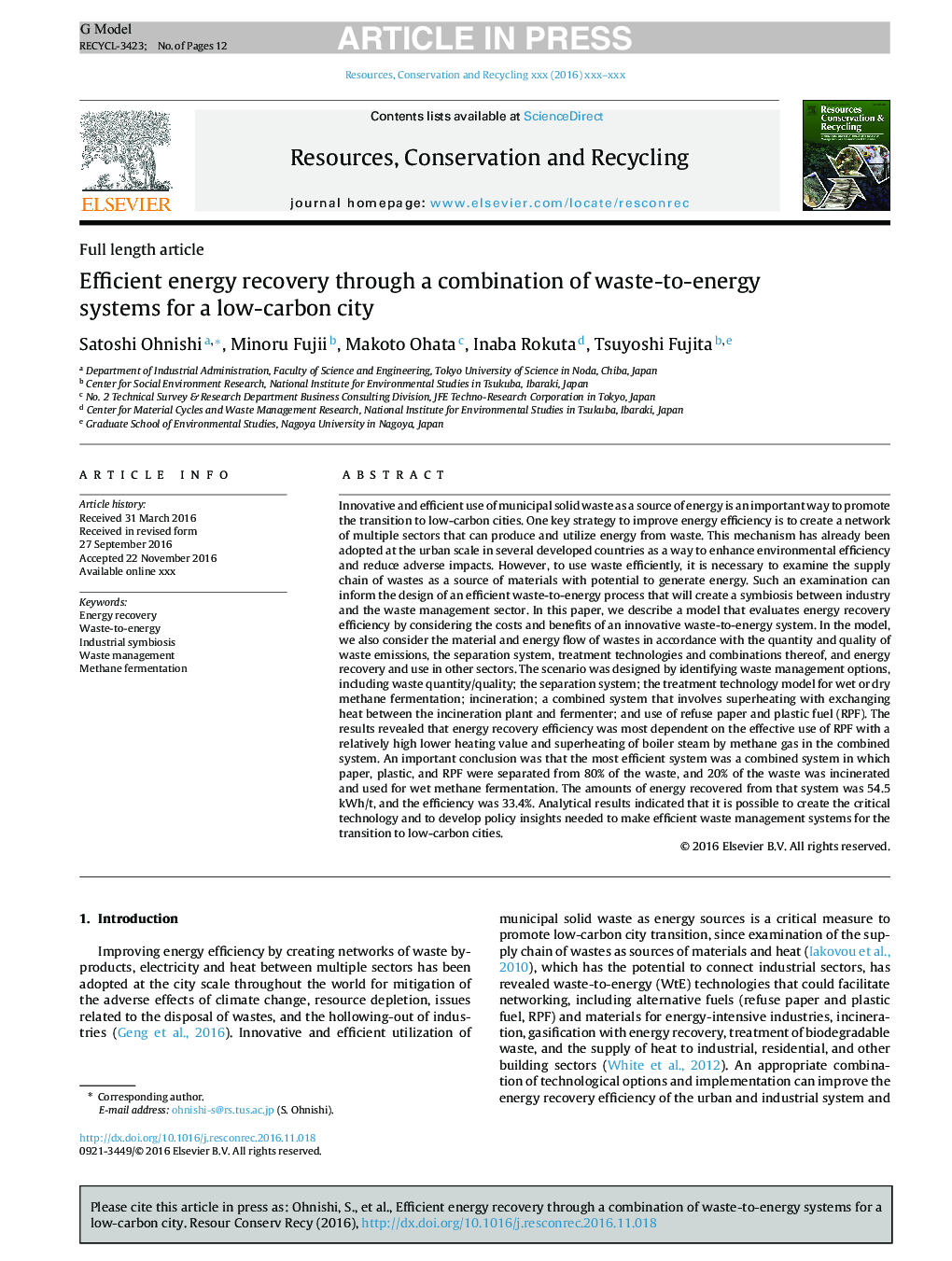| کد مقاله | کد نشریه | سال انتشار | مقاله انگلیسی | نسخه تمام متن |
|---|---|---|---|---|
| 7494730 | 1485664 | 2018 | 12 صفحه PDF | دانلود رایگان |
عنوان انگلیسی مقاله ISI
Efficient energy recovery through a combination of waste-to-energy systems for a low-carbon city
ترجمه فارسی عنوان
بازیابی انرژی کارآمد از طریق ترکیبی از سیستم های زباله به انرژی برای شهر کم کربن
دانلود مقاله + سفارش ترجمه
دانلود مقاله ISI انگلیسی
رایگان برای ایرانیان
کلمات کلیدی
بازیافت انرژی، زباله به انرژی، همزیستی صنعتی، مدیریت زباله، تخمیر متان،
موضوعات مرتبط
مهندسی و علوم پایه
مهندسی انرژی
انرژی های تجدید پذیر، توسعه پایدار و محیط زیست
چکیده انگلیسی
Innovative and efficient use of municipal solid waste as a source of energy is an important way to promote the transition to low-carbon cities. One key strategy to improve energy efficiency is to create a network of multiple sectors that can produce and utilize energy from waste. This mechanism has already been adopted at the urban scale in several developed countries as a way to enhance environmental efficiency and reduce adverse impacts. However, to use waste efficiently, it is necessary to examine the supply chain of wastes as a source of materials with potential to generate energy. Such an examination can inform the design of an efficient waste-to-energy process that will create a symbiosis between industry and the waste management sector. In this paper, we describe a model that evaluates energy recovery efficiency by considering the costs and benefits of an innovative waste-to-energy system. In the model, we also consider the material and energy flow of wastes in accordance with the quantity and quality of waste emissions, the separation system, treatment technologies and combinations thereof, and energy recovery and use in other sectors. The scenario was designed by identifying waste management options, including waste quantity/quality; the separation system; the treatment technology model for wet or dry methane fermentation; incineration; a combined system that involves superheating with exchanging heat between the incineration plant and fermenter; and use of refuse paper and plastic fuel (RPF). The results revealed that energy recovery efficiency was most dependent on the effective use of RPF with a relatively high lower heating value and superheating of boiler steam by methane gas in the combined system. An important conclusion was that the most efficient system was a combined system in which paper, plastic, and RPF were separated from 80% of the waste, and 20% of the waste was incinerated and used for wet methane fermentation. The amounts of energy recovered from that system was 54.5 kWh/t, and the efficiency was 33.4%. Analytical results indicated that it is possible to create the critical technology and to develop policy insights needed to make efficient waste management systems for the transition to low-carbon cities.
ناشر
Database: Elsevier - ScienceDirect (ساینس دایرکت)
Journal: Resources, Conservation and Recycling - Volume 128, January 2018, Pages 394-405
Journal: Resources, Conservation and Recycling - Volume 128, January 2018, Pages 394-405
نویسندگان
Satoshi Ohnishi, Minoru Fujii, Makoto Ohata, Inaba Rokuta, Tsuyoshi Fujita,
